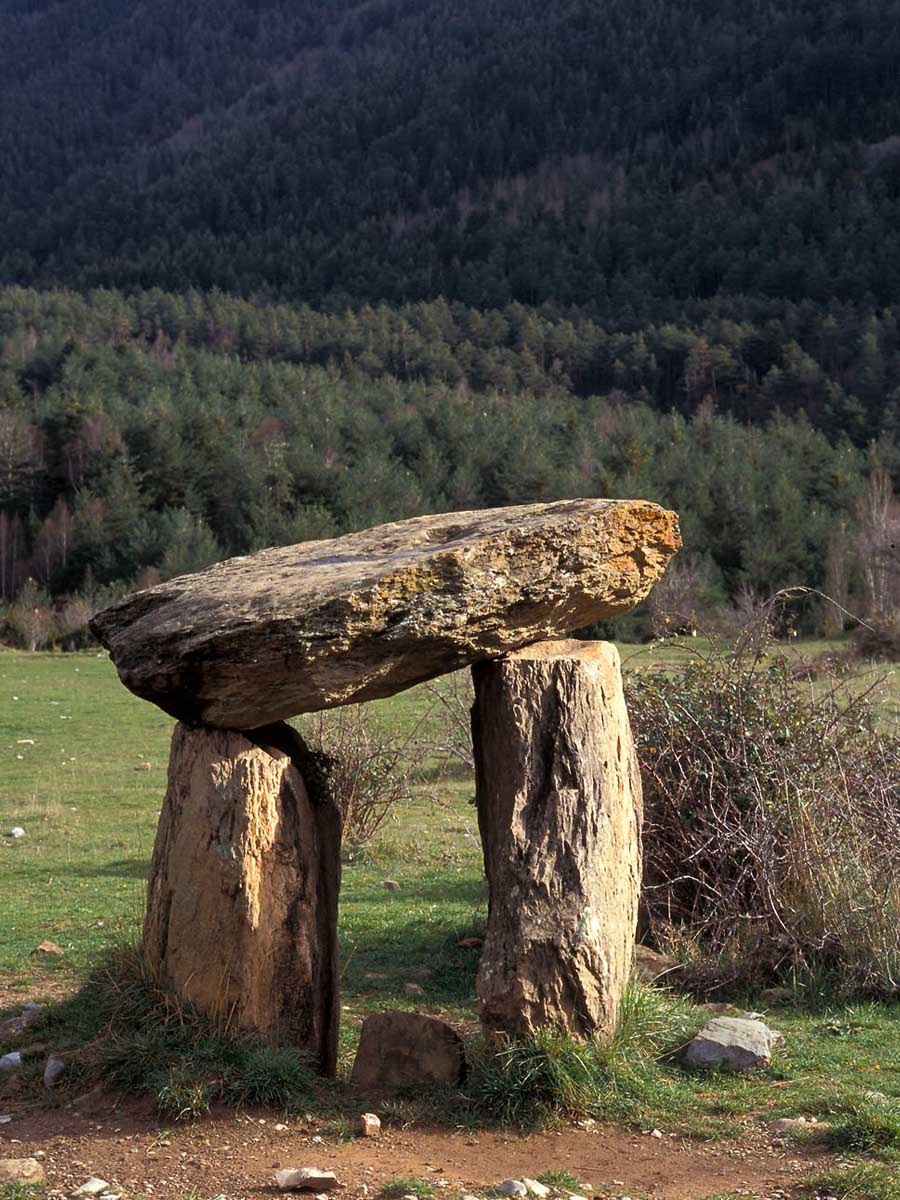During the Palaeolithic age people lived in rocky shelters or in caves, and survived on what nature provided, that is by hunting wild animals and collecting plants.
The emergence of a much more benign climate led to a cultural evolution and a change in the landscape that involved a number of significant transformations, a revolution equivalent to the modern day Industrial Revolution.
The way of life changed with Neolithic man (6000-5000 BC): people lived in more stable settlements, and they began to cultivate the land and domesticate wild animals. As a result, societies became more and more complex, and towards the end of the Neolithic age (from 3500 BC) the building of megalithic monuments began.
There are many and very varied traces of megalithic structures in Alto Gállego. They are located in areas that are sheltered and well connected to other areas. Occasionally they are situated at the end of a narrow pass (Saint Elena’s Dolmen) or near paths used for moving livestock or connecting communities (the Ibirque Dolmen).
WHAT YOU NEED TO KNOW…
Menhir: This is simplest form of megalith. It consists of a block of stone driven vertically into the land.
Dolmen: A collective burial place comprising two large vertical stones, on which a third stone is placed horizontally, forming a funeral chamber. Depending on its size, dolmens can be classified as simple, passage or a covered gallery.
Burial mound: This is a mound of stones and earth that may have a dolmen structure underneath.
Cromlech: This is a stone circle. The diameter of the circle can vary. The circle may be on its own, or grouped with other megalithic structures, which is connected to initiation.
WHERE TO FIND THEM…
FORMIGAL: Formigal residential area
The remains of burial mounds and dolmens can be found in the Troya Ravine. There is a burial mound on La Corona de ros Faballons mountain, several burial mounds in the area around the Ibón de Culibillas lake and a dolmen in the Old Sallent Pass and in the area around the Ibón de Espelunziecha lake.
PANTICOSA: Panticosa village
Although it is no longer possible to visit the dolmen, because it is gone, you can take advantage of your visit to see the lake, Ibón de Sabocos, which is close to an ancient megalithic site. There is an information panel that explains the most important characteristics of the dolmen and gives more detailed directions.
TRAMACASTILLA: Village of Tramacastilla de Tena
There are burial mounds, dolmens and cromlechs, mostly located around the Ibón de Tramacastilla lake, the d’Ordezit ravine and near the bridge over the Escarra ravine.
PIEDRAFITA: Car park at Piedrafita de Jaca
You can see burial grounds in two areas near the Ibón de Piedrafita: one on the right-hand side of the dam, where eight burial mounds have been recorded; and another one on a hillock close-by, to the south east.
SANTA ELENA: Saint Elena’s Dolmen
Two dolmens discovered in the 1930s were destroyed during the Spanish Civil War and the stones used in other buildings. One of the dolmens, the bigger of the two, was later restored, and it is the one you can now visit.
How to get there: Travelling on the N-330, you pass Biescas in the direction of France, and when you get to Saint Elena’s Spring (La fuente de Santa Elena), take the track on the right, which divides shortly after. Continue straight on until you get to an open area where the dolmen is located.
IBIRQUE DOLMEN: Next to the Ibirque Dolmen. Take the track that leads to Nocito, from La Guarguera.
This dolmen was discovered in 1949 and is also known as the Witches’ Cottage (Caseta d’as Bruxas). It is a simple dolmen with a large chamber and is located in the Sierra de Picardiello, which divides the Rivers Guarga and Guatizalema. The site has panoramic views of both valleys and looks out over the emblematic Tozal de Guara peak to the south. It is also the entrance point for the Sierra de Guara Nature Reserve.

